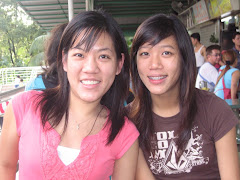
dining etiquette
etiquette refers to "the forms, manners and ceremonies established by convention as acceptable or required in social relations, in a profession or in official life."
proper table manners will increase your confidence and promote your ability to show your skills in handling social situations.
napkin etiquette
place the napkin in your lap immediately after the last person has been seated at your table.
do not shake it open.
if the napkin is large put the fold toward your waist.
if you must leave the table during the meal be sure to put the napkin on your chair or to the left of your plate. never hang it on the back of your chair.
do not shake it open.
if the napkin is large put the fold toward your waist.
if you must leave the table during the meal be sure to put the napkin on your chair or to the left of your plate. never hang it on the back of your chair.
napkins are meant to be dirtied, so feel free to wipe your mouth or hands, but not your neck or entire face.
when you are finished eating, place the napkin to the right of the plate.
when you are finished eating, place the napkin to the right of the plate.
passing the food
always pass to the right.
it is ok to pass to your immediate left if you are the closest to the item requested.
always pass the salt and pepper together.
ask the person nearest to what you want "to please pass the item after they have used it themselves."
it is ok to pass to your immediate left if you are the closest to the item requested.
always pass the salt and pepper together.
ask the person nearest to what you want "to please pass the item after they have used it themselves."
eating
begin eating only after everyone has been served.
bread and rolls should be broken into small pieces. butter only one or two bites at a time. butter should be taken from the butter dish and placed on the bread plate, not directly on the bread.
bring food to your mouth, not your mouth to the food.
chew with your mouth closed.
always scoop food away from you.
do not leave a spoon in the cup, use the saucer or plate instead.
taste before seasoning.
cut food one piece at a time.
do not use a toothpick, or apply makeup at the table.
if food spills off your plate, you may pick it up with a piece of your silverware and place it on the edge of your plate.
never spit a piece of food into your napkin. remove the food from your mouth using the same utensil it went in with. place the offending piece of food on the edge of your plate. the exception to this is a fish bone or a seed which you may remove with your fingers.
do not talk with your mouth full.
take small bites so you can carry on a conversation without the delay of chewing and swallowing large amounts of food.
bread and rolls should be broken into small pieces. butter only one or two bites at a time. butter should be taken from the butter dish and placed on the bread plate, not directly on the bread.
bring food to your mouth, not your mouth to the food.
chew with your mouth closed.
always scoop food away from you.
do not leave a spoon in the cup, use the saucer or plate instead.
taste before seasoning.
cut food one piece at a time.
do not use a toothpick, or apply makeup at the table.
if food spills off your plate, you may pick it up with a piece of your silverware and place it on the edge of your plate.
never spit a piece of food into your napkin. remove the food from your mouth using the same utensil it went in with. place the offending piece of food on the edge of your plate. the exception to this is a fish bone or a seed which you may remove with your fingers.
do not talk with your mouth full.
take small bites so you can carry on a conversation without the delay of chewing and swallowing large amounts of food.
generally, it is okay to use your fingers when eating tapas, canapes. small berries and fruit with stems attached.




No comments:
Post a Comment